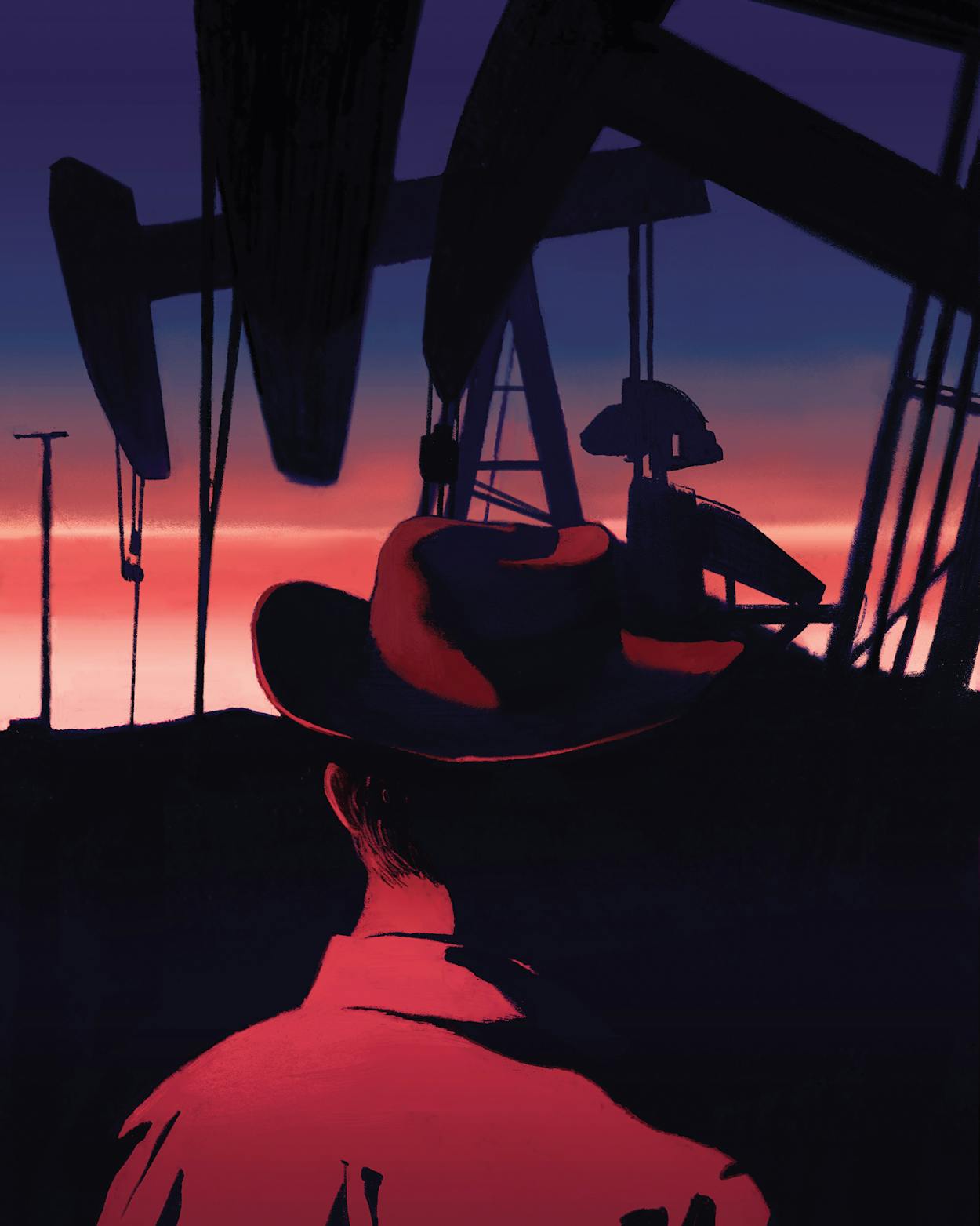In the early seventies, if you wanted to see a Texas oilman, you could head to Houston’s Esperson Building or to the Milam in San Antonio. He would arrive with sheaves of maps, leases, and oil-well records under his arm, looking for investors in his next wildcat well. This one would be a doozie, a ripsnorter.
The Texas oilman was already cemented in the public’s consciousness. In 1950, Time magazine put Houston’s Glenn McCarthy on its cover with the somewhat hyperbolic tag “Since Spindletop, a Jillion Jackpots.” Others came after him, such as Giant’s fictional Jett Rink and the flesh-and-blood Michel Halbouty, who got his start carrying water to thirsty drillers at Spindletop. The Texas oilman was a man, often mustachioed, with a glamorous wife; together, they graced Houston’s society pages. He was an optimist who didn’t consider a bankruptcy or two a stain on his record. If you didn’t lose it all once or twice, you probably weren’t trying hard enough. But more than anything else, the Texas oilman created immense wealth from his wits and gumption; he could drill a hole in the earth and, like a magician pulling a rabbit out of a hat, extract great fortunes for himself and those around him.
It wasn’t obvious yet, but by 1973 the days of the Texas wildcatter were disappearing. Forty-three percent fewer wildcat wells were drilled that year than during the 1956 peak. T. Boone Pickens had already realized that it was easier to borrow a few billion dollars from Wall Street investors to buy an oil company than to do the riskier work of exploring and drilling yourself. McCarthy saw the future of oil exploration was going international. “It became more lucrative to look for oil overseas,” he told Texas Monthly in 1974. “It was more lucrative for a Texas oilman to produce some sheik’s oil than his own oil right here.”
The game was changing, and Texas oilmen changed along with it. They became more workmanlike and less glamorous. “Most wear sober business suits and live no more boisterously than other industry executives,” noted U.S. News & World Report in 1980. Gone were the days when Texas oilmen worked their way up from the field. Lee Raymond earned a PhD in chemical engineering and joined Exxon as a production research engineer. He rose through the ranks, eventually becoming CEO, in 1993, and orchestrating the merger with Mobil. Under his leadership, the Irving-based company embraced McCarthy’s lament that the most lucrative barrels were overseas. Exxon drilled for oil all over the world. All that mattered to Raymond was finding profitable barrels of oil. When questions arose about climate change, he publicly downplayed them.
Who is the Texas oilman today? He is no longer always a man. Meet Vicki Hollub, the president and CEO of Houston’s Occidental Petroleum. She resembles her predecessors in many ways. She’s focused on oil and comfortable taking giant risks, as when she outbid Chevron to purchase Anadarko Petroleum in a $38 billion deal. But she’s also steering the company, and the industry, through a new century that’s reeling from oil’s climate impact.
The goal is no longer just to find more oil but to produce what she calls better oil. In an interview with Bloomberg, she described a giant new project Oxy is undertaking in the Permian Basin that will suck carbon dioxide out of the air and inject it underground. There, after flushing oil out of tiny spaces in the rocks below, it will remain sequestered. More CO2 will be locked away in the process than will be emitted by burning the oil, she says, making the resulting product the world’s first net-zero-emissions oil. If it works, Oxy will no longer be mainly an oil and gas company. It will be in the carbon-management business.
“Texas carbon manager” doesn’t, admittedly, have the same allure as “Texas oilman.” But in many ways the two jobs aren’t that different. Hollub, like McCarthy, is taking big gambles to provide the world with an abundance of energy. The search for a jillion jackpots goes on.
This article originally appeared in the February 2023 issue of Texas Monthly with the headline “Up From the Oil Fields.” Subscribe today.
- More About:
- Energy









